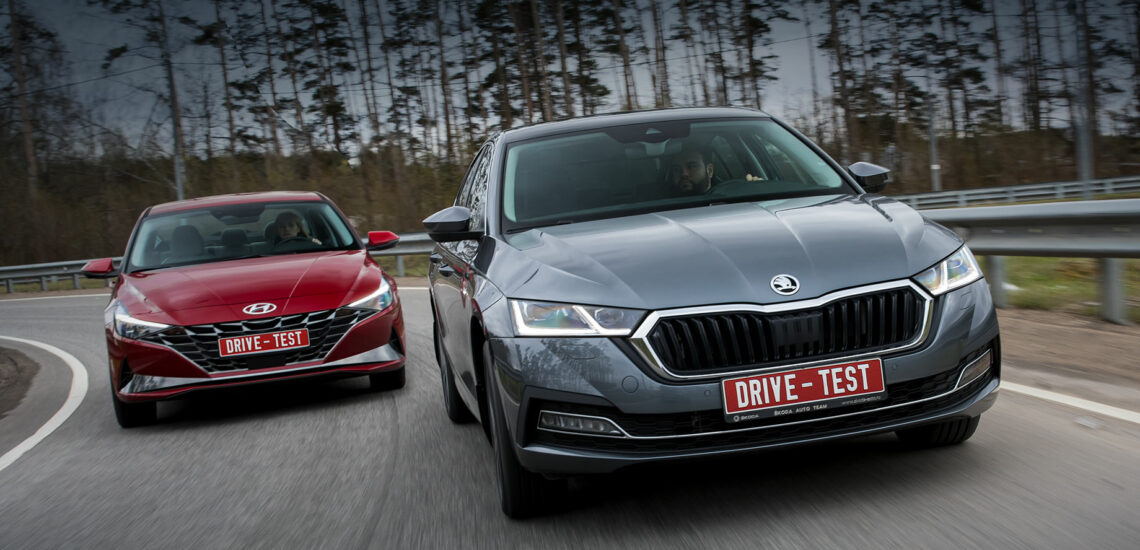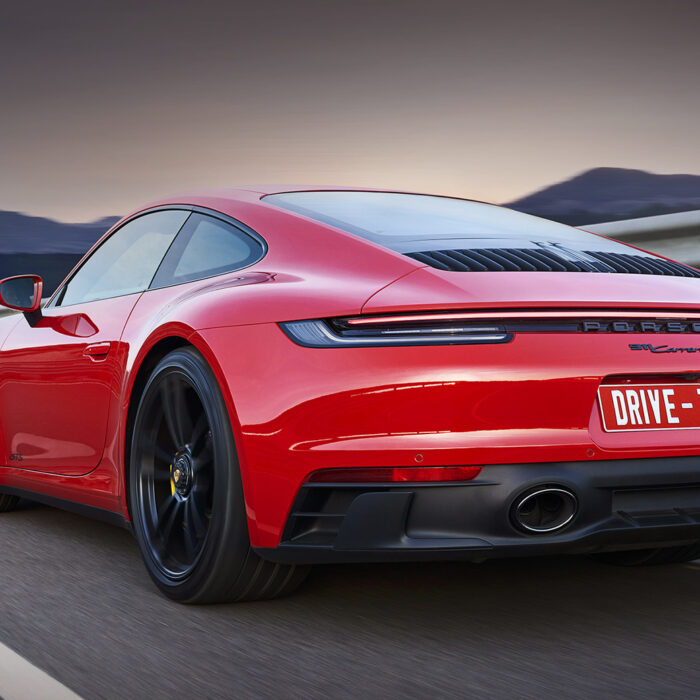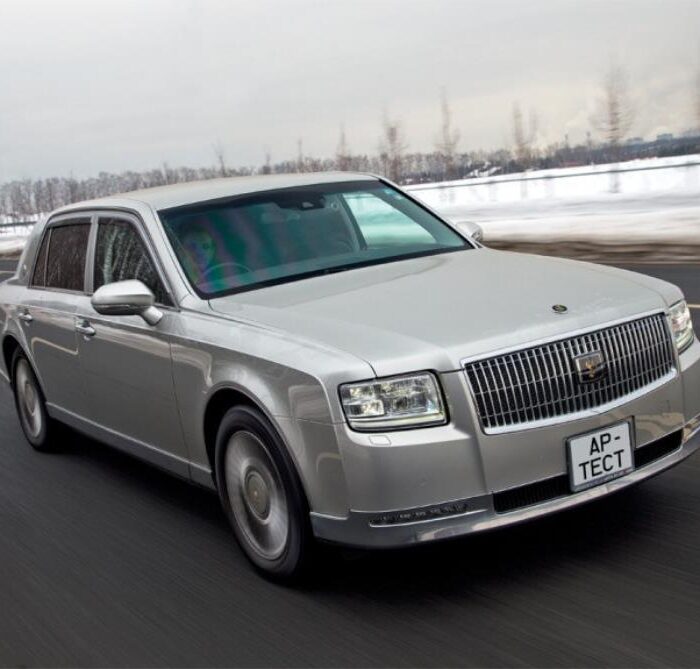La Skoda nous accueille avec ses phares matriciels et le silence à l’intérieur après un bon claquement de la portière du conducteur. J’ai l’impression d’être devenu sourd. Les autres sens fonctionnent : il y a une odeur agréable, je vois un volant qui rappelle l’ancienne Classe S, de grands écrans avec une belle image, de l’alcantara sur la face avant, des filaments d’éclairage de contour… L’Octavia serait-elle en promotion ? Mais elle ne se conduit pas beaucoup mieux que sa devancière, et cette stagnation est surtout perceptible sur le fond des progrès que l’Elantra démontre avec le changement de génération.
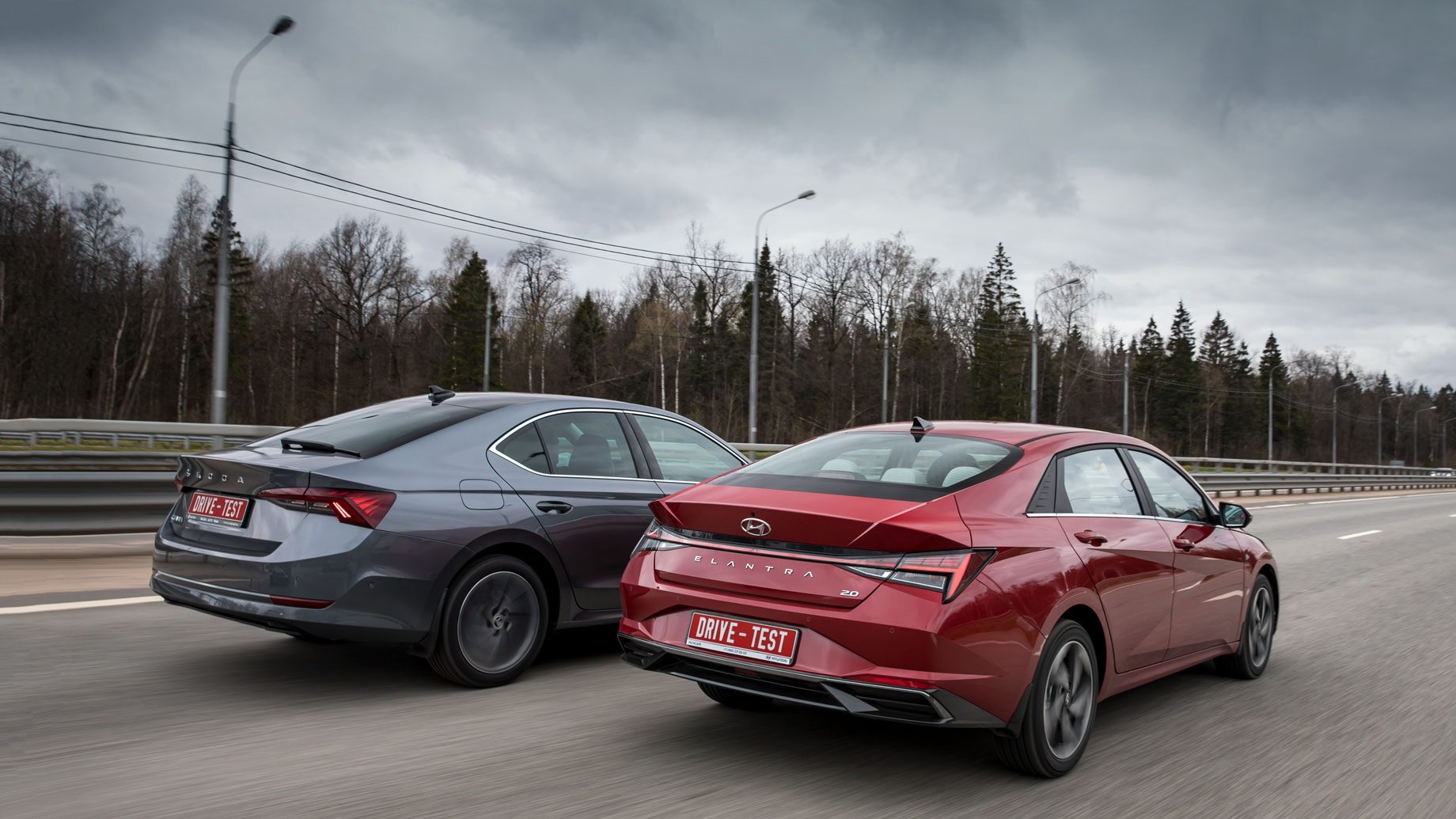
Il n’est pas non plus parfait, mais il offre au moins une douceur supérieure à celle de la Skoda. Elle accorde moins d’attention au micro profil, y compris dans le fonctionnement des roues de 17 pouces (l’Octavia a un pouce de plus). Elle n’abandonne pas dans les carrefours, et les dos d’âne peuvent être pris en courant. Objectivement, il y a assez de vibrations – la Hyundai n’ignore aucun défaut moyen – mais les pics d’accélération sont lissés et ne provoquent pas d’irritation. En revanche, l’Elantra se sent lâche sur une route défoncée. Comme si son kilométrage n’était pas de 4000 miles, mais quarante fois plus.
Mais la Hyundai a un problème encore plus important au niveau de l’isolation sonore. Dès les basses vitesses, l’habitacle est envahi par le ronronnement des pneus, qui progresse puissamment avec l’augmentation de la vitesse affichée au compteur. Et s’il y a de l’asphalte entrecoupé de graviers sous les roues, les occupants de l’habitacle n’ont rien à envier aux autres. En même temps, les pierres et le sable tambourinent dans les passages de roue, et si vous roulez par temps de pluie, l’eau éclabousse aussi bruyamment. Le moteur atmosphérique se met lui aussi à l’épreuve, poussant des cris hystériques sous le capot à chaque accélération intense.
Si l’on oublie les colères du système de contrôle de la trajectoire, l’Octavia traite les oreilles avec plus de délicatesse. Il y a moins de bruits de la route dans l’habitacle, le moteur turbo, qui fonctionne moins souvent à haute vitesse, ne dérange pas, et la suspension arrière semi-indépendante ne produit pas de bourdonnement dans les basses fréquences, comme sur le modèle précédent. Mais elle tremble sur les bosses ! Le liftback signale les nids de poule avec une prédilection particulière, et sur les gros creux, la rigidité de la suspension est sur le point de se transformer en cruauté. On peut améliorer un peu son sort en abandonnant les roues de 18 pouces, mais les réglages du châssis sont les premiers responsables de la faible douceur de roulement.
Néanmoins, sur le même tronçon de route misérable que l’Elantra, l’Octavia est plus concentrée. Elle est beaucoup plus rigide, mais cette rigidité n’empêche pas de ressentir la race élevée. Et ce n’est pas pour rien que je m’acharne : le châssis peut être une source d’endorphine. Car la Skoda s’élance solidement dans les virages, et la force de direction précise augmente ou diminue logiquement. Le système de stabilisation à plein temps est libéral et n’empêche pas immédiatement un dérapage après un brusque coup d’accélérateur. Les freins gardent également un rythme actif, et c’est un plaisir de travailler avec eux à grande vitesse. En ville, la combinaison de la course libre et de l’occlusion brutale qui la remplace nécessite une accoutumance.
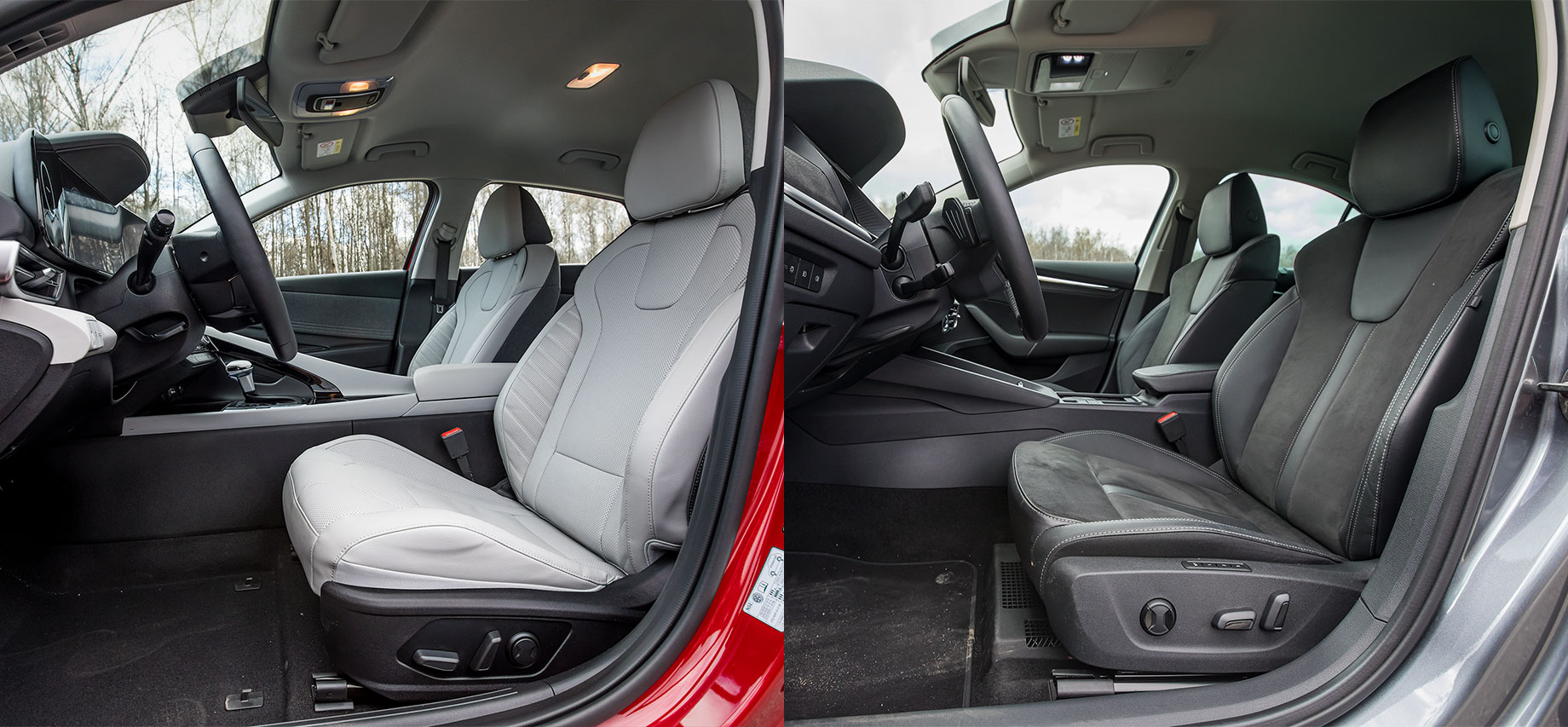
La conduite du moteur 1.4 TSI turbo de 150 chevaux est possible sans problème. Le moteur quatre cylindres coupleux est réactif, toujours prêt à accélérer. Lors d’une accélération à partir de l’arrêt, il dépasse facilement les données de son propre certificat de deux dixièmes, atteignant 60 miles/h en 8,8 secondes, selon Racelogic, cependant, seulement avec un conducteur. La boîte de vitesses automatique à huit rapports est également à la hauteur, sélectionnant les bons rapports à temps et rétrogradant rapidement et en douceur, même avec une légère pression sur l’accélérateur. Et si vous appuyez plus fort sur la pédale, l’« hydromécanique » rétrograde de quatre rapports sans problème.
L’Elantra dispose également d’une boîte automatique classique et développe 150 ch. Mais le moteur atmosphérique est lent à bas régime, s’anime un peu à moyen régime et tire avec assurance à haut régime. Lorsque l’Octavia n’est pas là, il semble que l’Elantra ne lui soit pas inférieure au démarrage. Cependant, l’appareil enregistre 9,9 s dans la meilleure tentative contre les 9,8 d’usine. Et lors des accélérations, que ce soit en ville ou sur autoroute, la Hyundai n’est pas en mesure de rivaliser avec la Skoda – elle a beaucoup plus de couple (250 N-m contre 191) ; il est atteint plus tôt et dans une plus grande plage de régime moteur. La commodité de l’antipatinage est également médiocre : la pédale d’accélérateur est amortie plus fortement que dans l’Octavia, et la boîte de vitesses à six rapports fonctionne plus lentement.
Mais l’Elantra est prête à aller vite – tenace, concentrée, impatiente de tourner ! Les roulis sont étonnamment plus faibles, tout comme le balancement en diagonale dans les virages, et il n’y a pratiquement aucune tendance au dérapage, même lorsque le système de stabilisation est désactivé. La voiture peut le faire ! Mais le conducteur ne veut pas. Le volant visqueux est presque dépourvu de rétroaction, et la force est toujours la même.
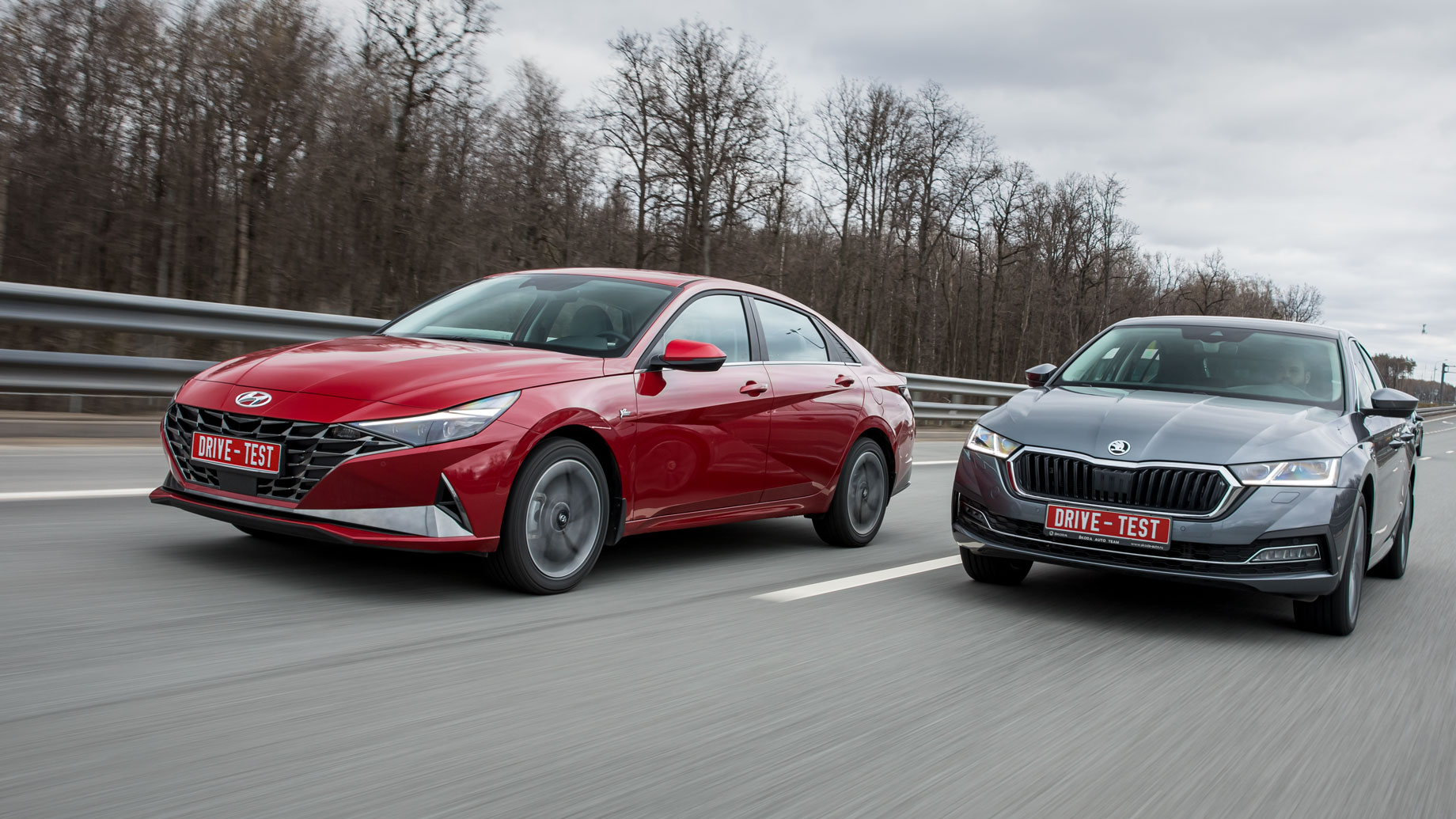
Il y a aussi des problèmes avec les freins traditionnellement utilisés dans les voitures coréennes – ils ne peuvent tout simplement pas supporter une conduite active avec des ralentissements fréquents. La pédale devient plus molle, l’odeur de brûlé apparaît… Mais en conduite calme, j’ai apprécié les freins encore plus que ceux de l’Octavia – l’efficacité est la même, et l’intensité du freinage est davantage régulée par l’effort de la pédale que par la course.
D’une manière générale, les acheteurs de l’Elantra ont de la chance. Avec une apparence et un intérieur aussi spectaculaires, elle pourrait rouler de manière primitive, et aucun client n’en serait gêné. Mais les ingénieurs sont parvenus à un bon équilibre du châssis. De plus, la Hyundai dispose de sièges avant plus confortables, d’une géométrie calibrée de l’assise des sièges arrière, d’une meilleure visibilité des rétroviseurs. L’Elantra évolue ! Et pourtant, je ne peux pas vous conseiller d’acheter la Hyundai. Les Coréens n’ont pas suffisamment insonorisé leur voiture et sont allés trop loin dans l’économie.
Le capot sans vérin à gaz, les matériaux de finition bon marché, le dossier du siège conducteur sans pochette sont une liste incomplète de choses gênantes.
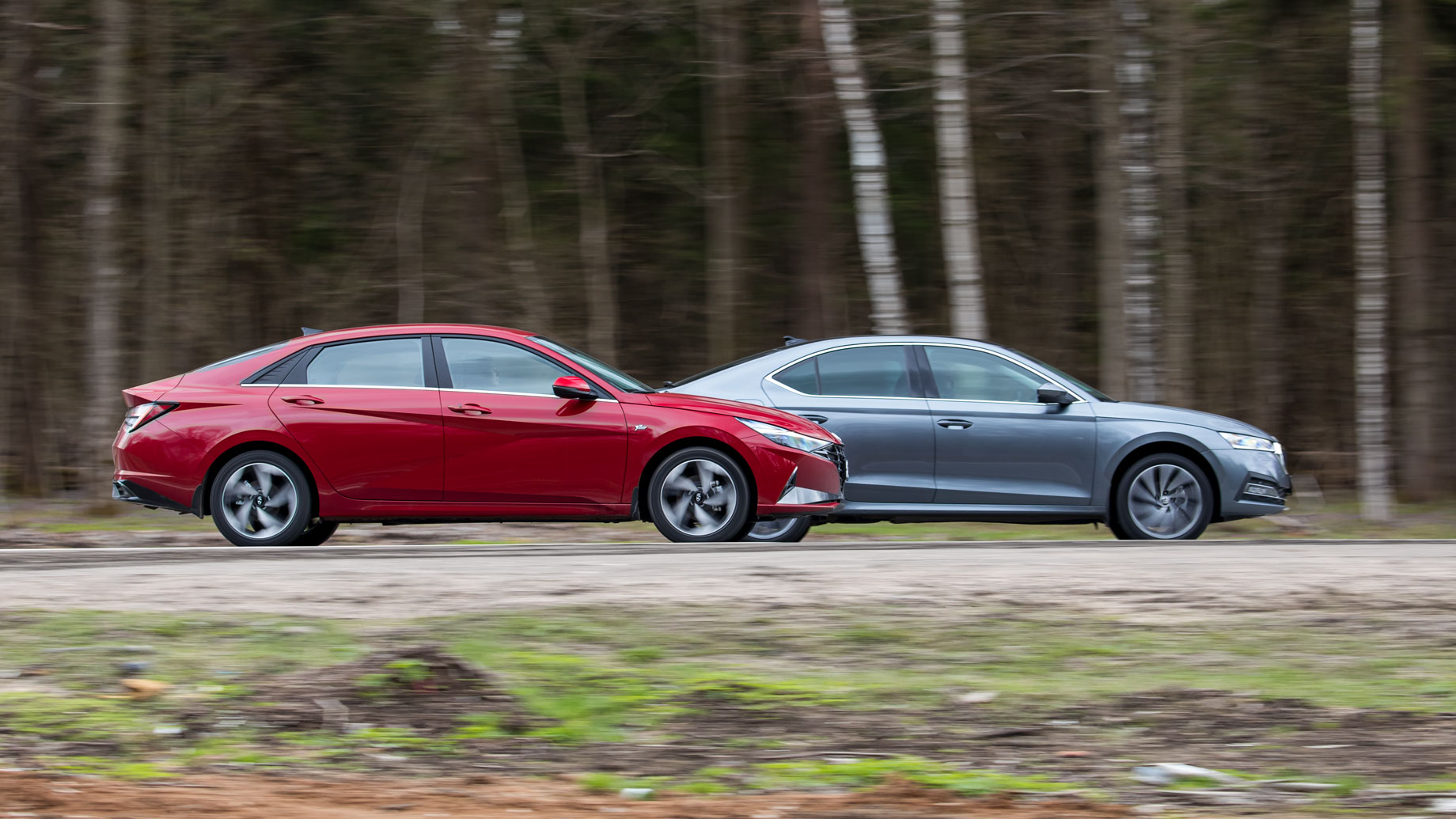
L’Octavia, à son tour, connaît une crise d’autodétermination. C’est presque la voiture la plus familiale de la catégorie. Il est plus confortable de monter et de descendre de la Skoda, son habitacle est plus spacieux. Il est même gênant de parler du coffre – un autre niveau de commodité et de capacité. Mais pourquoi la rigidité et le bruit de l’Octavia ressemblent-ils à ceux du Cayman sur roues de 18 pouces ? Si l’on en croit notre rédacteur en chef, lorsqu’on se trouve derrière le volant de l’Octavia en ligne droite, il est facile d’imaginer que l’on conduit une Porsche bon marché. Où est la logique ? Par ailleurs, le travail en direction du confort a été clairement effectué : à basse vitesse, les amortisseurs travaillent plus délicatement qu’auparavant, le passage des dos d’âne est accompagné de balancements. Mais c’est encore trop avec le degré général de Sport.
Comme dans le cas de l’Elantra, je ne recommanderais pas catégoriquement l’Octavia. Mais dans le cadre de notre essai comparatif, elle semble préférable. Il est difficile d’ignorer non seulement la commodité et l’aspect pratique inaccessibles, mais aussi un sens plus élevé de la qualité, une insonorisation sensiblement meilleure, un groupe motopropulseur et une direction plus agréables. Le liftback tchèque est tout simplement plus avancé technologiquement que son homologue coréen. Et les Tchèques peuvent améliorer la douceur de conduite. Le confortable Karoq ne nous fera pas mentir.
Il s’agit d’une traduction. Vous pouvez lire l’original ici : https://www.drive.ru/test-drive/hyundai/skoda/60a3de51631bce01e036c896.html

Publié Juin 16, 2022 • 7m à lire

